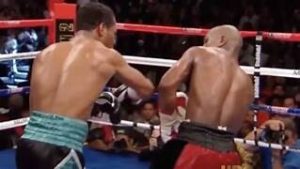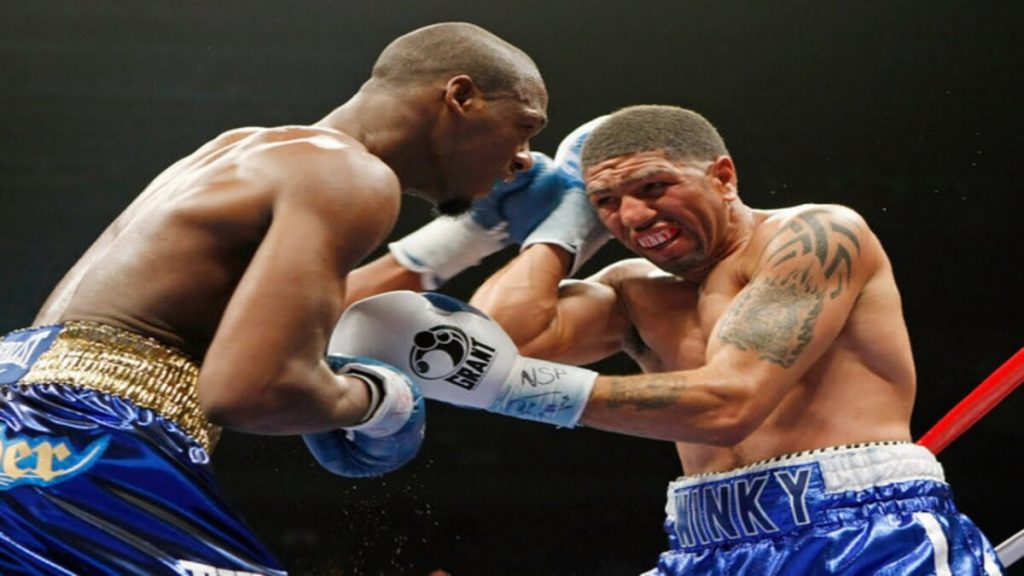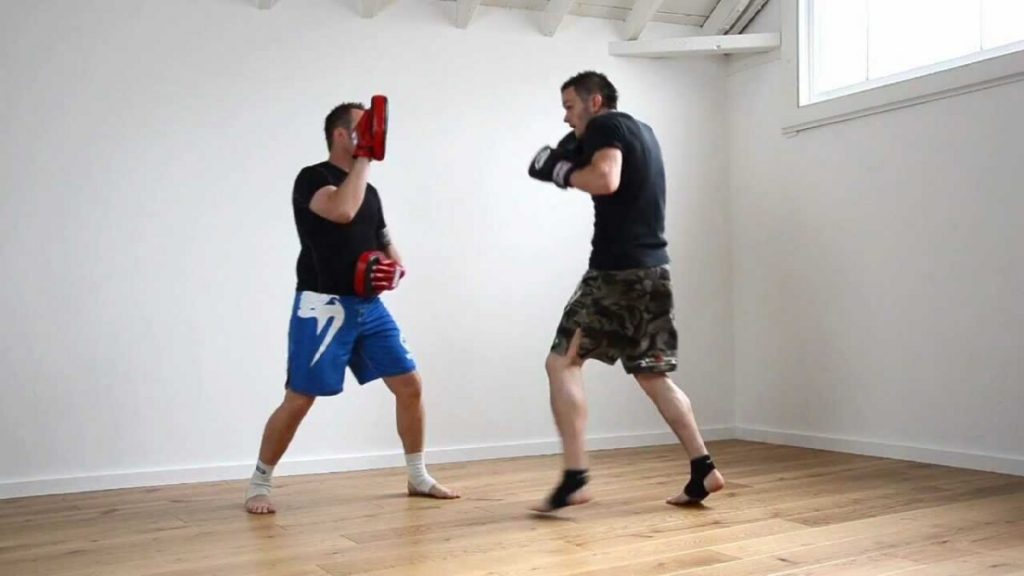Boxing Guards: One of the purest forms of conflict known to man is probably boxing. It doesn’t get any easier than fighting with only your hands. A boxer can use a variety of techniques and strategies to influence the result of a match, despite the sport’s basic simplicity. We will examine many boxing guards research in this post, together with their distinct advantages and disadvantages inside the squared circle.
5 Boxing Guards You Should Examine
1) Conventional Boxing Guard

The most prevalent guard in boxing is the classic stance. Its general practicality—the hands are raised sufficiently to shield the chin, deflect hooks, and parry blows—is the explanation for this. The elbows are low enough to deflect body blows at the same time.
Additionally, the hand position allows for sufficient flexibility to move the head somewhat easily. Bobbing and weaving become challenging and time-consuming if the hands are raised. Head movement is easier and blocking takes a little longer when hands are low. Out of all the boxing guards, this one is still the most commonly utilised.
Both Gennady Golovkin and Anthony Joshua are excellent examples of contemporary boxers who use a classic posture. It’s a really grounded, textbook-style writing that touches on everything. The drawback is that while it’s the most often employed guard in boxing, it may be easily exploited. The typical position therefore doesn’t present any surprises.
You might also be interested in reading this: How To Block Boxing Punches?
2) The Philadelphia Shell Guard

The Philly shell, often known as the “crab shell,” is a special guard that provides a significant degree of protection when applied properly. While the right-hand stays high to block hooks and catch punches, the lead hand stays low to shield the stomach from body blows. Moreover, your opponent will find it more difficult to predict your jabs when the lead hand is low.
Floyd Mayweather is the most well-known user of the Philly shell. The issue with this protection is that it might take years to learn how to use it properly and is incredibly tough to utilise. According to legend, even the legendary Floyd had to take his fair share of hits in the gym before he could master the move. His 50-0 career record indicates that his efforts were not in vain.
When using this guard, it’s important to keep your lead shoulder high to protect the chin. You may deflect crosses using the shoulder roll, which allows you to launch a cross of your own. This is one of Floyd’s signature motions.
3) High Guard

The illustrious Ronald “Winky” Wright is the one who employed the high guard the most; other players who frequently used it were Canelo Alvarez and Vasyl Lomachenko. Your hands are kept in the best possible position to parry straight strikes by this guard. Particularly useful when your opponent throws a jab from the other stance is the parry-to-cross combo.
Maintaining a tucked elbow position is crucial for blocking uppercuts. You will need to be in good physical shape to employ this protection because you are basically begging for bodily strikes. Another drawback is that the jab travels farther and is more visible to your opponent.
A tight high guard obstructs vision while being extremely tough to break. It may also be seen as an indication to your adversary that you are in survival mode. This is due to the fact that a lot of boxers turn to it when they are injured in order to gain time and heal. Keeping your back away from the ropes, attacking the body, and maintaining space are the greatest strategies for dealing with a pressure fighter who is well-defended.
4) The Boxing Guard Peekaboo

Hall of Fame trainer Cus D’Amato invented the Peekaboo guard, which is most famously associated with his pupil “Iron” Mike Tyson. For fighters who are smaller and stockier, the peekaboo posture is ideal. Taller fighters should avoid this stance since it emphasises head mobility and constant forward pressure.
The primary distinction between the Peekaboo guarding style and other guarding styles is that your toes point forward instead of sideways. This improves head movement from left to right without destabilising you. It’s crucial to keep your hands close to your cheeks when performing the peekaboo. By doing this, your chin is shielded by the gloves and your arms protect your body.
The Peekaboo style’s drawback is that it depends largely on time and reflexes, making it predictable and constrained. It’s hardly a coincidence that Mike Tyson started to lose fights as his reflexes slowed down, even though the partying probably didn’t help. His only style was the peekaboo, thus he was unable to modify and adopt a different strategy.
5) Cross Guard

Among the boxing styles discussed, the cross guard is arguably the most unique. Archie Moore, Ken Norton, and boxing heavyweights like George Foreman employed it to great effect, despite its rarity. Joe Frazier also employed a form of the cross guard, but he paired it with unrelenting forward pressure and frequent bobbing and weaving.
The cross guard means just what it sounds like. You create a cross with your arms in front of your body. It sacrifices effective offensive to maintain a strong defensive posture since it is difficult to launch forceful, straight shots when holding a cross-armed weapon.
While the cross guard shields you from uppercuts, it leaves your liver and ribs more vulnerable, so keep that in mind if you want to attempt it. Though it requires skill to employ well, this guard lends itself to an unusual boxing approach.
In summary
Any style you choose has advantages and disadvantages; none are inherently good or bad. In an attempt to provoke their opponent, players like Roy Jones Junior and “Prince” Naseem Hamed would occasionally choose to wear no protection at all. It all comes down to the risk-to-reward ratio that you find most comfortable in the end.
Try out a few of these boxing stances and discover which one suits you best. There are no hard and fast rules, therefore it could be wiser to learn many different guards instead of concentrating on just one.

